Foreign travelers always find Vietnam in general, and Saigon, Hoi An, Ha Noi… in particular, to be fascinating and alluring travel locations. Many people’s first thoughts when considering these locations are ones of friendliness and kindness.
Vietnam is a stunning nation that is safe for travelers, but like any other nation, it has its fair number of con artists that prey on unwary tourists. Any first-time visit to a place is bound to teach you something, whether it’s good or unpleasant. You are more vulnerable to dishonest people who might take advantage of your circumstances if you are unfamiliar with the regional norms and language. What does “tourist trap” actually mean?
1. What do tourist traps in Vietnam look like?
“Tourism traps” are con games played by business households and locals on international tourists visiting Vietnam. In actuality, your money—not you—is their main objective!

There are now some widespread scams in Vietnam’s tourist areas, including those using phony taxis, traditional motorcycles, street vendors, and the sale of items at exorbitant costs. Most tourist traps and frauds take place in well-known tourist destinations or locations like Bui Vien Street, Independence Palace, Cathedral of Notre Dame, Ben Thanh Market, Hoi An, or Hanoi Old Quarter.
International tourists are just “bewildered golden deers” always in the sights of “the hunters” when they visit these places. “So why, in local tourist areas, are tourist traps and frauds so uncommon? ” – Some visitors have asked.
2. Why do you often get trapped at the tourist attractions more than local places?
The most plausible cause is possibly the reputation of these places. Millions of results identical to the places I mentioned can be found in a matter of seconds when you search on Google for the term “Saigon/Hanoi top tourist destinations.” As a result, tourist traps are common there. Crowds are frequently used by con artists to accomplish their ruses in greater secrecy and target more international tourists.
For the time being, I’ll keep talking about tourist traps. How might tourist traps in Vietnam be avoided? And what must you know before visiting Vietnam? I’ll respond truthfully, as if I were on my own Vietnam tour. So let’s get on the way!
3. How to avoid tourist traps when traveling in Vietnam?
3.1. Fake taxis
On their family tours of Vietnam, tourists may run into illegal taxi drivers who employ a variety of techniques to con their foreign passengers. Using the customized meter, which will operate much more quickly than usual and result in higher than anticipated rates, is a popular practice. Additionally, they will take the longer routes in order to up the prices even more.
The typical “fake taxi” scam involves running the meter “without 000.” For instance, you would be required to pay 500.000 VND even though the actual cost is only 50.000 VND. Fortunately, “fake cabs” are currently prohibited at the airport thanks to some official rules from the government. They still mostly show up at tourist attractions, though.
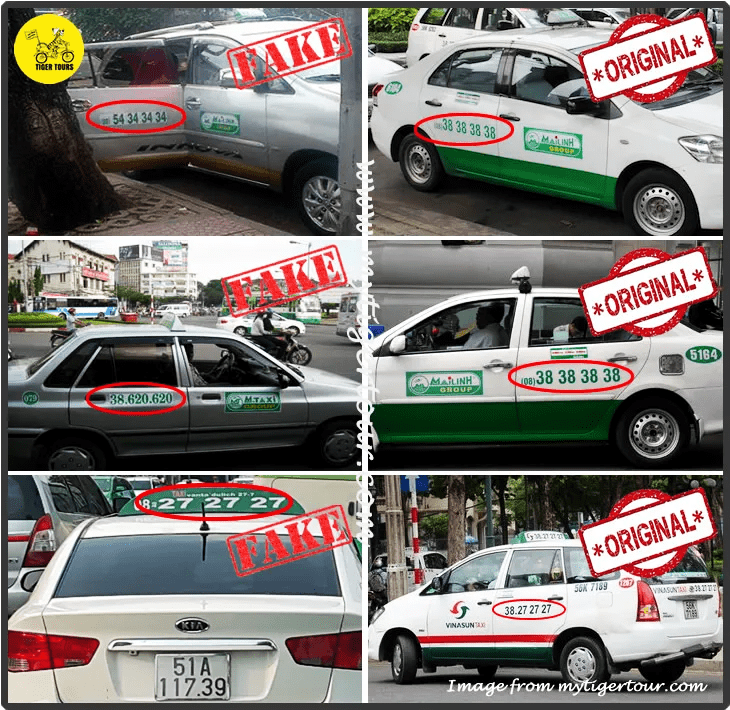
Showing that you know where you’re going even though you don’t is a traveler’s trick. You’ll be taken in if you appear to be lost or to be studying a map.
Utilizing a reputable brand, like Vinasun or Mai Linh, will help you avoid the majority of taxi frauds. These cabs should be easily identifiable thanks to their logos and colors.
- Vinasun hotline: Vinasun Taxi
- Mai Linh hotline: Mai Linh Taxi
Additionally, for added security, you can reserve a cab using an app. My two suggestions for reserving a taxi in Vietnam are Grab and Be.
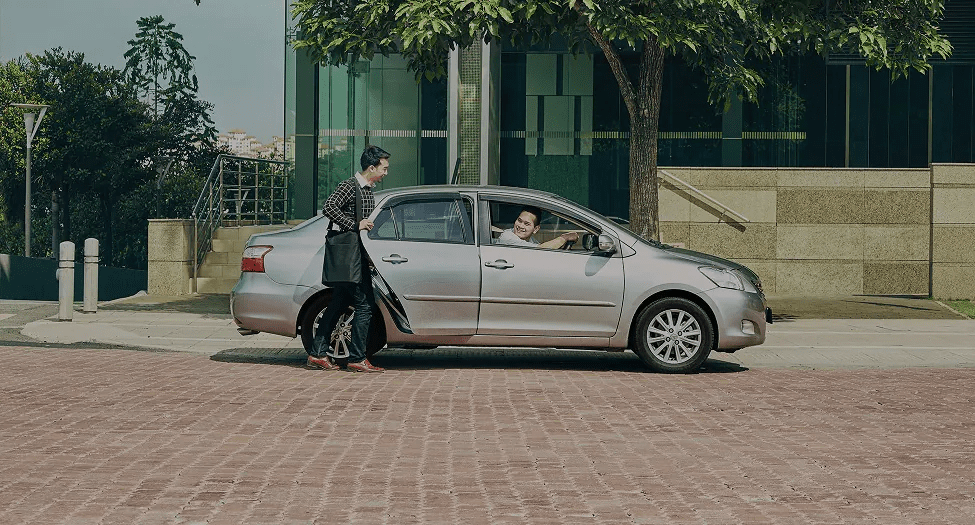
3.2. Motorbike taxis
The Xe Om (motorcycle taxi), a common mode of local transportation, is used by tourists. When speaking specifically of conventional motorbike taxis, overwhelming calls from them may make you fearful and fixated.
Motorbike taxi drivers will approach visitors in tourist places and draw them in with their catalogs’ plethora of intriguing photographs. Additionally, they charge a very low cost for their motorbike-taxi tour, but do not rejoice too fast. because the tourist traps they utilize are merely easy techniques.
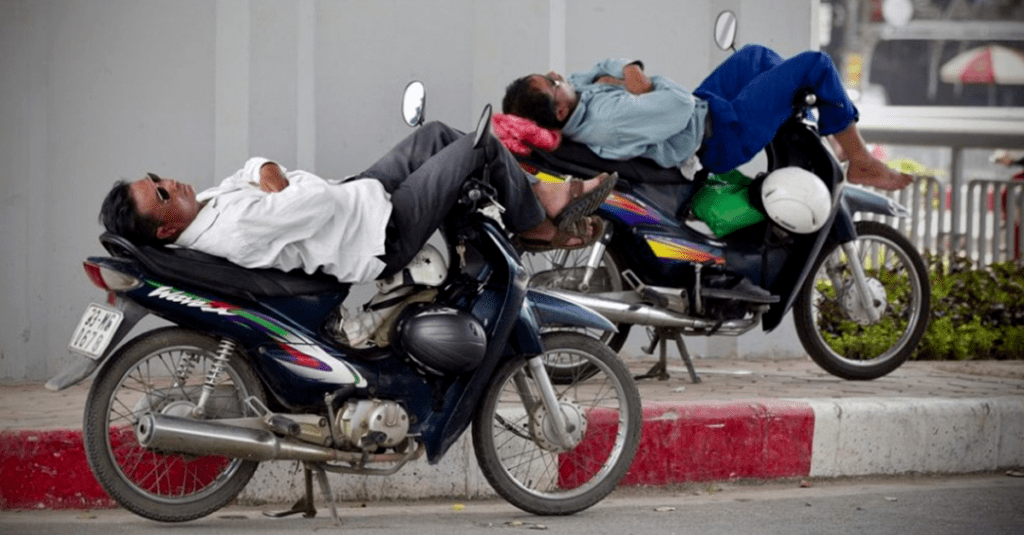
In other words, they agree to the price of the trip you discussed up front and then demand extra money when you get there. They claim that you must not have heard them correctly.
Similar to taxis, you can book a motorbike taxi through certain well-known applications including Grab, Be, and Go Viet. In reality, Vietnamese users frequently use these programs, particularly Grab. I believe that doing this will help you avoid the tourist trap offered by conventional motorbike taxis.

3.3. Cyclo tour
Similar to taxi scams in frequency, cyclo scams can occasionally even be more deadly. Everywhere in Ho Chi Minh City, but particularly in District 1, you can find cyclos or bike taxis advertising for business on nearly every corner, and some of them are skilled at charming unwary tourists into joining them for a trip. However, be careful that compared to cyclos you hire via a hotel, these independent ones are more likely to con you.
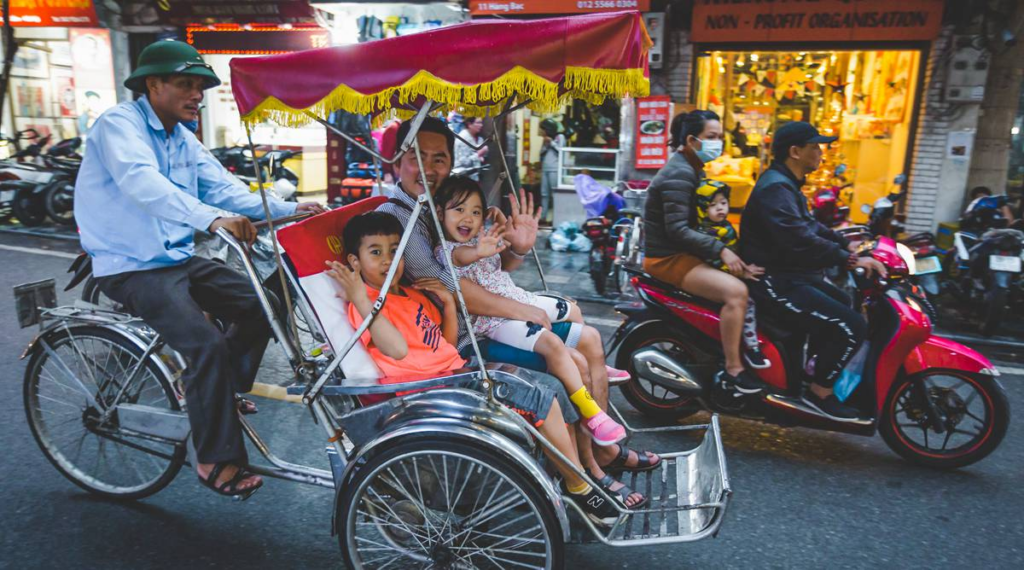
Only reserve a cyclo through your hotel or a travel agency if you are convinced that you want to ride one. Be absolutely explicit about the fee arrangement before you begin the ride. Make sure you comprehend the complete cost and everything it contains. It is important to be clear about your agreed fee, including whether it is per person, per hour, or a flat rate regardless of the number of persons or duration.
To assist avoid confusion, it can be helpful to put it in writing and confirm with the driver. Additionally, confirm that the total fee includes waiting time if you plan to use a cyclo throughout the day and the driver must wait for you while you explore.
3.4. Buying souvenirs
Everyone typically purchases gifts for friends and family while traveling. However, as the first prices quoted by the sellers are generally relatively high, please use caution while comparing the prices of these things.
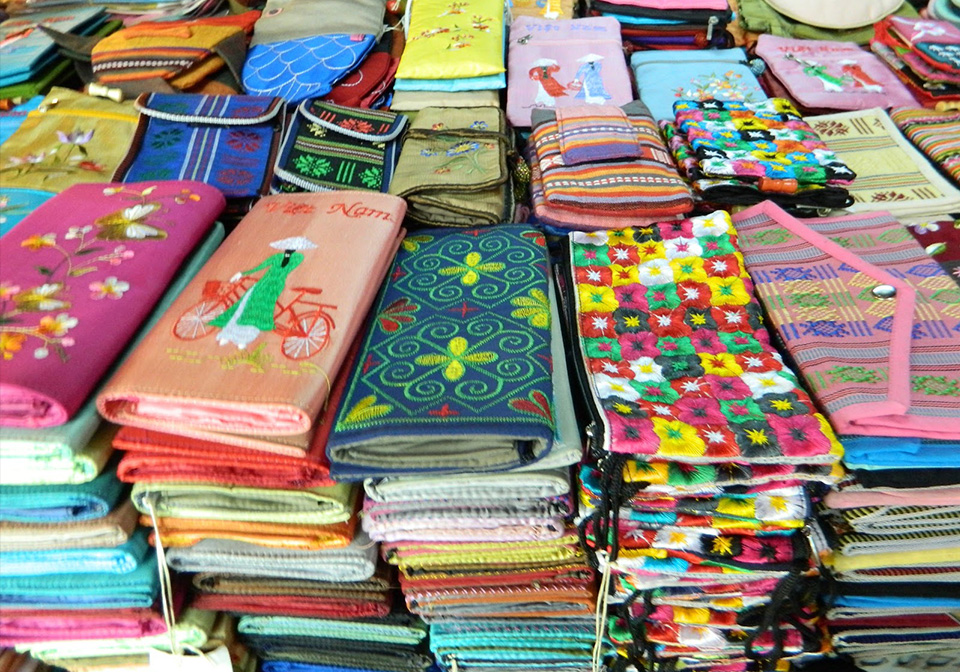
This occurs mostly in touristy areas like Hoi An, Hanoi’s Old Quarter, and the passageways surrounding Ben Thanh Market. or other gift stores at tourist destinations. Consider pricing negotiation to be a game. Whoever negotiates most successfully wins. You should haggle costs down to between 50 and 60 percent of the initial pricing if you want to get mementos from there.
3.5. Taking photos with street vendors
Just be quick and discrete when snapping images of individuals, especially street vendors. As per typical, street merchants will inquire as to whether you’d like to use their Non La (conical hats) and bamboo baskets for any picture sessions. There are now two scenarios that could occur:
- To get photos shot using these distinctive photo props, you must pay.
- You can snap pictures for nothing. Instead, they will compel you to make a purchase in support of some of the things they are promoting.
You should be quite firm while negotiating costs. Be prepared for some shouting and a crowd of individuals that don’t treat foreign tourists with any consideration while fooling the locals.
Here are some pointers:
- Utilize your smartphone to stealthily take pictures.
- Avoid speaking with them or using their supplier for a photo shoot.
- Just leave and look for Circle K stores to buy coconuts.
3.6. Selling bird-toys
Some street merchants use the “selling of bird toys” as a tourist trap, especially in Hoi An. They are produced by hawkers who frequently bring vibrant bird toys to Hoi An. To draw tourists’ attention, they fire them into the air. They then haggle for a very high price when outsiders offer to buy. The cost is currently between 200,000 and 300,000 VND per unit. You can, however, haggle for cheaper costs, such as 50,000–100,000 VND.

3.7. The two-shine
The “two-shine” is another typical tourist trap in Vietnam. Please be prepared to be pursued by shoe shiners if you are wearing dress shoes, leather shoes, boots, or any other nice shoes in a touristy area. Foreign visitors frequently reject these services.
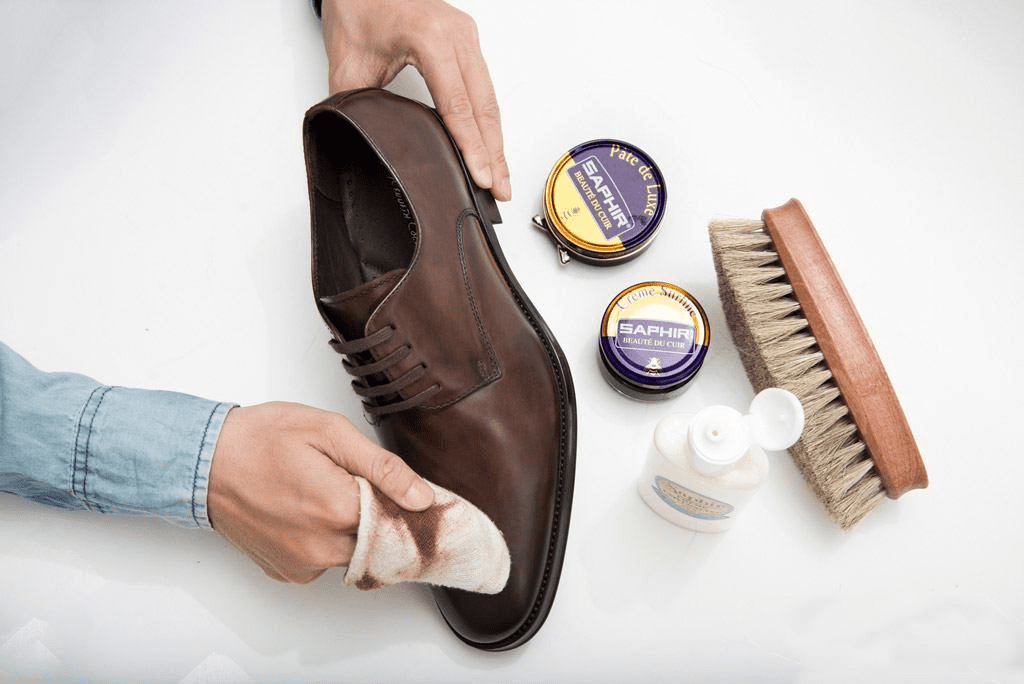
However, youngsters under the age of 12 make up the bulk of shoe shiners. They have burnt skin, are tiny, and have a very unattractive appearance. Of course, these pitiful images affect the majority of us. They will want a fair price to polish your shoes.
But the cost had doubled when they came back. The price was only for one shoe, which was the main factor. The cost of shoe shine and slipper repair can range from a few hundred to a million VND, preying on international tourists who have poor communication skills and little information. Visitors who wish to avoid trouble should “shut their eyes” and pay.
My real advice is still to NOT debate if you want to. Please be calm and believe in me! Because muscle gangsters from the underworld may always be found nearby. Visitors are advised to politely decline the invitations. Visitors should alert the local authorities in the event of coercion.
3.8. Playing blackjack with Filipinos
It would be dreadful to miss this tourist trap—the Filipino blackjack scam—when returning to Ho Chi Minh City, often known as Saigon. The intention of the con artists is to capture international visitors who are traveling alone and have recently arrived in Vietnam.
Many visitors have complained that the gang is an annoyance even though the majority of tourists who are solicited refuse to join the con artists. You will play blackjack and will either win or lose depending on their wishes if you accept the invitation, though.

You will initially receive some winning strategies. Actually, you can triumph! The sum of the bet will then finally exceed what you have. A person who had previously agreed to be your “secret partner” winks at you at this point and offers to loan you the money you need.
You find it tough to pass up “this opportunity” when you have the mindset of a perpetual victor. You have just now to waste! The bigger issue, though, is paying back the money you just borrowed.
What are your thoughts on this fraud? Isn’t it simple to be taken advantage of? Therefore, if you wish to avoid them, just turn around when they approach and go away.
Conclusion
There are several frauds you need to be aware of. In actuality, tourist traps are a typical feature of all attractions. You might learn more about sharing with friends and family as a result. However, there are also feelings of uneasiness, discontent, and mild wrath present. Therefore, avoiding tourist traps and frauds is the best approach to have a fantastic trip in Vietnam.
You should thoroughly review my article and, if necessary, make notes. Additionally, the following hotlines are recommended for you to be aware of before visiting Vietnam:
- 112 – Emergency rescue
- 113 – Police
- 115 – Ambulance
- 024.3.94.23760 – Vietnam National Administration of Tourism
- 1080 – General Information Service
- 1088 – Consultancy Service
- 1081 – Yellow Pages Information and Consultancy Service
It is also smart to get assistance from embassies. I’ll end by wishing everyone visiting Vietnam from abroad a wonderful experience. You are always wecomed to Vietnam!
